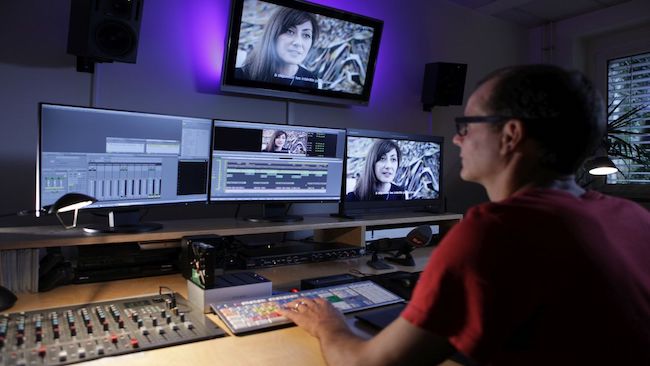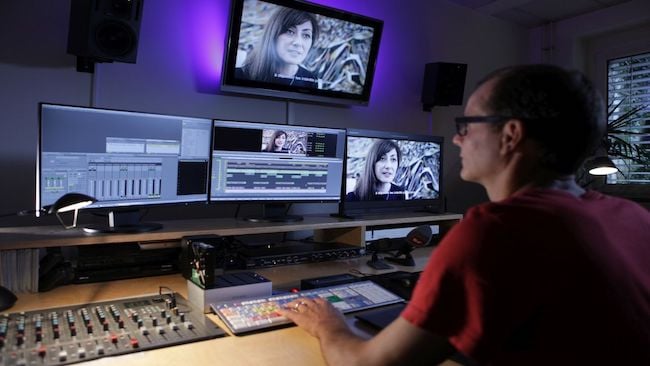
 Avid NEXIS | PRO is already in action at Swiss Vision
Avid NEXIS | PRO is already in action at Swiss Vision
Not everyone likes meetings, but getting a bunch of people together in a room with a whiteboard is an almost unbeatably effective way to share information. Everyone sees data and ideas at the same time, and there’s instant feedback. So why don't more editors do it?
Authors can collaborate with cloud applications like Google Docs. They can see each other’s words and edits appear in real-time.
So why is it that editors and post production specialists typically work on their own, even when they’re surrounded by other people?
It’s because it’s harder to share video. It’s technically demanding, and there are very specific measures that have to be in place to protect the safety and integrity of the work.
But there’s good news here. Collaborative working on even the most complex video projects is now eminently possible thanks to recent technology advances. We’ll come back to how it works in a minute, but first: why should you care about collaborative working when you’re only a small team, probably working in the same small office?
It’s because without the ability to share your projects, you and your colleagues might as well be in separate buildings. It’s a very inefficient way to work.
Lets imagine a team of editors working on a project to deliver a timely documentary to multiple platforms (mobile, social etc) in several versions. There’s a tight deadline, so an efficient workflow is vital. But without the ability to share assets everything has to be copied on to each user’s local drive. It’s very hard to allocate tasks between the editors because there’s no easy way to share the results, nor for the editors to modify or process - colour grade, for example - their colleagues’ work.
Now, imagine the same situation with collaborative technology, technology such as Avid NEXIS | PRO in place. What would it look like?
Each editor’s workstation would be connected with a fast network link to central storage. Users would be allocated a suitable amount of storage by a manager or an administrator. This storage “seems” like it’s attached to your own PC, but it’s not: it’s part of the very secure shared storage. If you need your allocation to be private to you, it’s private. If you need others to have access, that’s all set up too.
You can very simply share projects, clips and sequences - not just, say, between Avid users, but with Adobe Premier and other NLEs too. Effortlessly and safely - and in real-time.
But it goes even deeper than that.
Project sharing, right down to “bin” level means that your team can process in parallel: one person can be ingesting and organising media while another is putting together a rough cut. Meanwhile, someone else on the team is creating custom “looks” in a colour management tool.
It’s important to remember that you’re not limited to a single software provider for your shared workflow. For example, you could choose
Resolve for ingest/color correction
Media Composer for Editorial
Premiere/After Effects for short-form editing and effects
Pro Tools for Audio
Working collaboratively on a project is almost like sharing a mind. Everyone thinks and works in the same space. It’s incredibly efficient, and will transform the way you work - making the best use of everyone’s talents.
Click here to see how Avid’s Nexis Software Defined Storage can transform your creative working life
Tags: Post & VFX


Comments